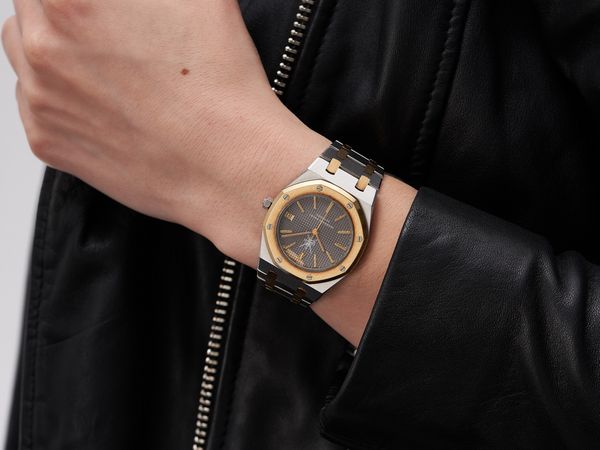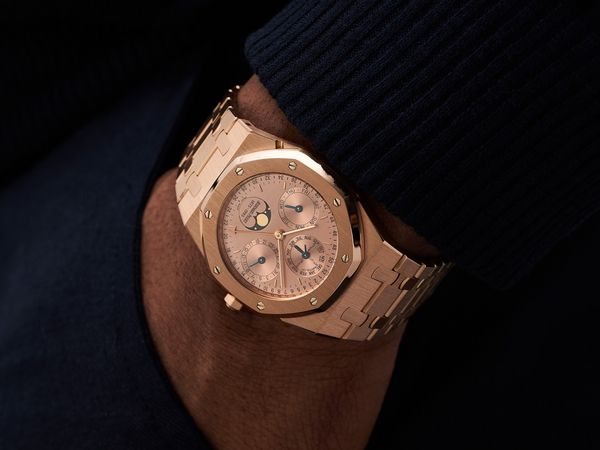- By Virginie Liatard-Roessli
Launching new trends that break established codes is directly anchored in the Royal Oak’s DNA. From its launch in 1972, the watch broke the codes that the public was accustomed to. Until then, luxury watches were made of precious metals: yellow gold, white gold, pink gold or platinum and intended to be worn during social or formal events. Never before had a luxury watch rhymed with steel or sport. No manufacturer took the challenge to present a watch in stainless steel whose value would be identical or even greater than in precious metal. And yet, Audemars Piguet ventured down this path and presented the modern man with a watch that he could wear both in his leisure time and at formal events.
For the first 5 years, the Royal Oak was only manufactured in stainless steel, the only exception to this rule was a white gold piece specially designed for the Shah of Iran.
In 1977, on the strength of its success and under pressure from the public, the 5402 was released in yellow gold, bicolor and then in white gold.
The first iteration in yellow gold was presented in 1977 on a lady’s model ref. 8638BA followed closely by a ref. 5402BA.
The same year, the first bicolor experiment (stainless steel and yellow gold) was also carried out on a ref. 8638SA then on a 5402SA. The code “SA” is a contraction of “ST” for stainless steel and “BA” for yellow gold. Indeed, the two letters after the reference number indicate the material of the watch. The design of two-tone watches will therefore follow the same logic: the bezel, the vertical links of the bracelet, the indexes and the hands will be in one material, while a second material will be reserved for the case, the links of the bracelet and the crown.
Records show that the first serially produced Royal Oak in white gold was also produced during 1977.
The first 5402s in yellow gold enjoyed great success in the United States, but the reception was more moderate in Europe, mainly in Italy, where the metal was more appreciated on models for ladies (ref 8638 in 29mm) or on the ref 4100 in 35mm.
Since the introduction of gold in the Royal Oak collection, Audemars Piguet has continued its experimentation with new materials such as titanium, tantalum, pink gold, and platinum. As mentioned previously, the last two letters of the reference indicate the material of the watch, so here is a list of some codes:
ST for stainless steel
BA for yellow gold
BC for white gold
OR for rose gold
PT for platinum
CE for black ceramic (see image below)
CB for white ceramic
When combining materials, the first letter corresponds to the material used for the case and the second for the bezel and the vertical links:
SP for stainless steel and platinum
AC for yellow gold and white gold
TR for tantalum and pink gold
TT for tantalum and stainless steel
PR for platinum and pink gold
RC pink gold and white gold
TP Tantalum platinum
Recently, the "IP" denomination caused a lot of debate. It does not stand for "I-nsert P-latine" as many think, but titanium and platinum. In fact, the T being already used for tantalum, the brand decided to use the second letter of Titanium to describe it!
Now you know.





